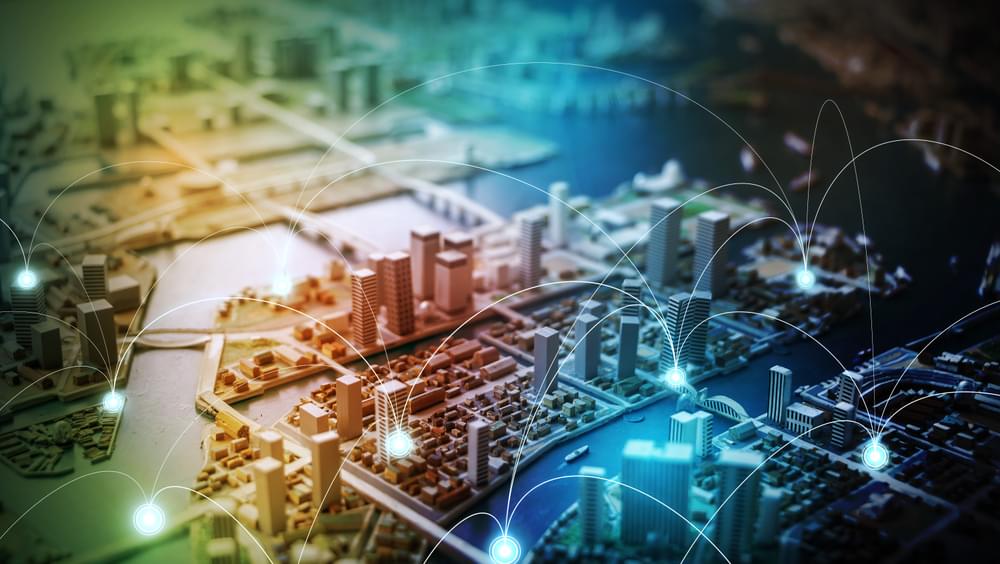WHAT IS THE INTERNET OF THINGS?
Self-diagnosis, self-configuration and self-optimisation. In a nut-shell this is what the Internet of Things (IoT) can bring to construction.
In simple terms, IoT is a network of embedded sensors, meters, appliances and devices capable of sending and receiving data about changes to their current physical state and surrounding environment over the internet.
The sensors that have been put in everyday items such as mobile phones have now reached the construction industry. The various objects, equipment and components used in the sector can have telematics sensors installed to monitor operating conditions. The conditions can then be tracked remotely and reported back through specialist software.
When on site, IoT can help answer questions such as the cost of unscheduled downtime when a machine breaks, why a particular machine operator uses higher fuel levels than average and when replacements should be made for particular parts or components at current usage levels.
IoT has also facilitated the rise of ‘smart’ or ‘digital’ buildings. Using these interconnected technologies helps to monitor a building’s performance, flag up its inefficiencies and make automatic adjustments. However, HVAC, lighting and fire safety systems already have sensors that can read inputs and adjust outputs. So why do we need IoT when most buildings already have their own internal networks?
IoT makes the running of a building a data-driven process. The technology can pull data from sensors to help facilities managers form useful operational insights. Currently, many existing building management systems (BMS) do not fully utilise the vast amount of operating data being generated. IoT can help identify operational issues more easily as most building operators do not have the time to analyse historical trend data in order to identify these operational problems. Having a BMS that can integrate and automate data analysis that results in simple and actionable insight frees up time for facilities managers.
GOOGLE'S NEW LONDON HQ

G&T is providing Cost Consultancy and Contract Administration services at Google’s new London headquarters. Once complete, the building will be one of the most advanced smart buildings in the world. As Google is the end user occupier, they have been able to push the boundaries more than usual so that smart capabilities are fully integrated.
The appointment of a Master Systems Integrator (MSI) at the earliest possible stage was a key focus on this project. This is not unique to this building as it has occurred on other end user Smart buildings but it is an additional role over and above that which is usually found on a “typical” office build and the scope in this instance far exceeds what has been done before. This is in respect of the quantity of data that is going into the BIM model detailing the properties of each of the building components and the level of testing of those components in advance of construction in a “laboratory” or workshop environment to ensure compatibility.
In order to mitigate the issue of technical obsolescence as far as possible, the MSI contractor on this project is engaging with all trades and their respective suppliers to ensure that the ability to accommodate future advances in technology currently in development is built in. A key part of this has been to ensure that all components are open source, allowing them to communicate with each other and the integrated BCS which can then offer data up to Google’s network.
Click here to read more on our work on this project
Costing ‘Smart’
Generally, by introducing smart technology early on in the development process, we would expect the following to have an impact on a shell and core/CAT A office building:
- SMART Tech: The cost premium is the increased number of BMS sensor points, but primarily the additional software programming required. Dependant on the level of spec, we would expect this to increase the BMS package by 15-30%.
- Enhanced Energy Management System (EMS): The energy saving strategies and billing requirements necessitate a more complicated infrastructure to be installed with increased software engineering time required. We would anticipate an additional 20-40% over and above a standard EMS installation.
The degree or level to which a building is classified as ‘smart’ will impact cost. A building with limited smart hardware will obviously cost less than a fully smart hardware option with IoT sensors and a full suite of functionality. A fully smart enabled building with a software platform that offers an end user app will push costs higher still.
IoT sensors are not expensive, but their coordinated deployment requires more expensive software specialists and applications. To avoid higher initial costs, building owners may choose to opt for a halfway house smart fit-out that allows tenants to add smart software functionality further down the line at their own expense. This effectively futureproofs the building so that it is at least capable of supporting a smart fit-out.
Regardless of the level of smart being used, owners of smart buildings expect the return on their investment to come from higher rents and lower vacancy rates. A recent report from Morgan Stanley claims that buildings optimised for occupants can command 3% more rent and gain a 10% increase in equity value.[1]
Value can also be created through other revenue sources. For example, offering tenants and other interested parties ‘analytics-as-a-service’ where data can be purchased. For example, data on tenants/occupiers movements could be sold to urban planners or advertisers.
If you would like to read more on IoT in Construction, click here to download the full report.
If you have any questions regarding the content of this article, please contact Michael Urie or Nick Rowe in the first instance.





